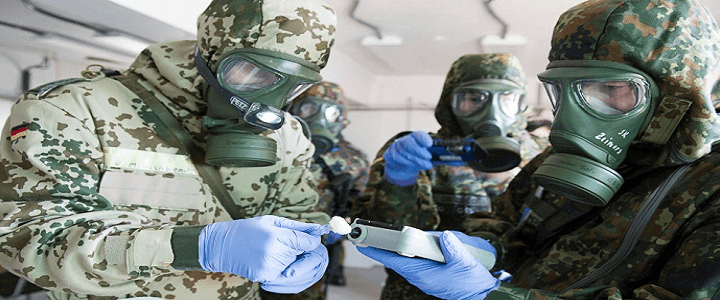There’s disturbing news coming out of Britain that carries serious implications for the upcoming summit between President Donald Trump and Russian President Vladimir Putin. In March, we all followed the saga of Sergei and Yulia Skripal, the former Russian spy and his daughter poisoned in Salisbury, England by Novichok, a nerve agent developed in the former Soviet Union. The Skripal attack was just one of several cases where former Russian spies were killed or almost killed in Britain.
And it seems to have happened again. Police on Wednesday afternoon announced that Charlie Rowley and Dawn Sturgess, two Britons found unconscious on Saturday, had not overdosed on narcotics but were in fact the victims of Novichok poisoning. The two were found in their home in Amesbury, which is about eight miles from Sergei Skripal’s home in Salisbury. The couple had, however, visited a park near where the Skripals were first sickened.
Persistent agents — but how persistent?
No one but Russia, where Novichok was developed, is known to produce it, but in 2016, four Iranian scientists synthesized some of the agent in order to perform mass spectrometry experiments. But Iranian involvement in the Salisbury and Amesbury cases is too fantastical to consider seriously, particularly given Skripal’s former line of work. Nor is there evidence (so far) to suggest that Rowley and Sturgis are or were formerly Russian agents themselves. This leaves only the possibility that they were the unfortunate victims of a very persistent agent left over from the attack on the Skripals.
There are two basic classes of nerve agents: persistent and non-persistent. Non-persistent agents are usually dispersed as a gas that quickly dissipates into the atmosphere. Persistent agents are oily, can often be absorbed through the skin, and can remain on surfaces — and remain deadly — for long periods. Part of the reason for using persistent agents is that, besides killing troops who come into contact with it, it can render key terrain and avenues of approach unusable. Your enemy often has to go where you want him to go when you’ve “slimed” a piece of land with a persistent agent.
The primary persistent nerve agent in Western stockpiles, prior to the adoption of the International Chemical Weapons Convention, was the agent known as VX. According to the Center for Disease Control, liquid VX evaporates “about as slowly as motor oil.” In other words, very slowly.
Novichok is a persistent agent, but there is very little detailed unclassified information on its persistence. In 2013, the Organization for the Prohibition of Chemical Weapons, the world’s watchdog, admitted that its scientific advisory board had “insufficient information” to even confirm Novichok existed, let alone to catalog its properties. It was designed to be up to eight times as lethal as VX; that does not mean eight times as persistent, but it seems safe to conclude that it is at least as persistent.
Complications for the upcoming summit
Trump and Putin are scheduled to meet in Helsinki, Finland on July 16. The leaders of the world’s only superpowers have a lot to talk about, including Russian aggression in Ukraine, its illegal annexation of Crimea, and the information operations in the U.S. designed to sow discord and doubt during the 2016 presidential election. If Trump truly wants to push Putin (but admittedly there’s no indication he does), he’ll bring up the Skripal poisoning as well.
Even if he’s reluctant to do so, British Prime Minister Theresa May will undoubtedly ask that Trump address the issue.
The incident deserves presidential-level attention because if the theories are correct, two innocent British civilians are in the hospital, critically ill, because Putin couldn’t stop himself from settling a score with a turncoat, and doing so in a manner that made it clear who did it.
Putin sent a similar message when his goons assassinated former spy Alexander Litvinenko with radioactive polonium-laced tea. That attack also left no doubt who was behind it, but unlike Novichok, the polonium was restricted to the teapot. Lord knows where else in southwestern England there are lethal, or nearly lethal, traces of Novichok waiting for another innocent person to happen by and pick them up.
Whether Russian intelligence operatives placed those remnants of Novichok in those locations intentionally, or if a contaminated Sergei Skripal unwittingly transferred them there, is almost immaterial. The genie, as the saying goes, is out of the bottle, and he’s not going back in. Wiltshire is not just the site of the neolithic Stonehenge, but also of the Defence Training Estate-Salisbury Plain, the British Army’s largest maneuver area, and, perhaps ironically, of Porton Down, the home of the UK’s Defence Science and Technology Laboratory. This chemical lab initially implicated both Novichok and Russia in the Skripal case.
Who knows what Putin and Trump will discuss if Trump gets the one-on-one he says he wants. But for the sake of Charlie Rowley and Dawn Sturgess, Novichok deserves a slot on the agenda.



